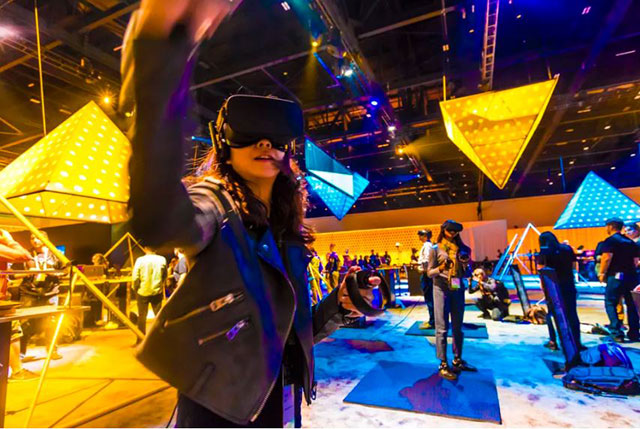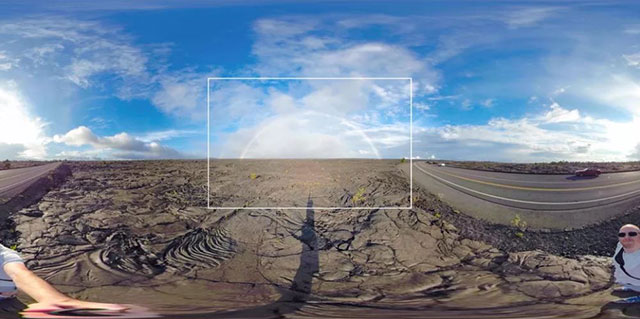Don't think 4K is terrible, with these technologies, that's still not enough
Technology has reached the point where nearly every new TV has 4K Ultra HD resolution. Many online streaming services, movies, and games also support 4K. Except for radio programs, 4K has now become extremely popular.
But there are already prototypes and rumors about 8K TVs. The new HDMI 2.1 standard even supports 10K. Even so, it is too much on TV - even 4K is basically human eyes can not distinguish on a normal screen and due to the distance to watch - some other devices need a resolution higher prize.
VR virtual reality
Although rumors and expectations have decreased somewhat, VR still retains its importance, but needs to be cheaper and better. One of the main ways is to have a higher resolution.
The closer you see the screen, the higher the resolution you need to make the picture not break. A clear view of each pixel makes you no longer want to believe what you see in the virtual world. The first movement tracking and audio playback are still doing very well to improve VR experience but screen technology is not yet coming.
 Don't think 4K is terrible, with these technologies, that's still not enough Picture 1
Don't think 4K is terrible, with these technologies, that's still not enough Picture 1
The resolution of the Oculus Rift is 2160 x 1200, meaning that each side has only 1080 x 1200
So what we need is actually . a higher resolution phone screen. OLED screens on the Note 8 and iPhone X are having resolutions of 2960 x 1440 and 2436 x 1125, respectively, which are enough to look when held in the hand but if only a few centimeters away from the face, it may not be enough.
Why is the phone? The reason is that these screens are still the basis for the screen on VR Headset. Full Ultra HD phones with VR will be very good for VR but with a higher resolution, bigger screens are even better.
Perhaps up to now, every year has had enough VR Headset own OLED screen as above sold. And we are waiting to pass this milestone.
Shooting movies, taking 360-degree photos
The 360 camera market is quite small compared to the camera market in general, but this year saw the presence of many 'big and new' names showing that 360 is becoming more important.
This is a 360-degree video that lets you see the potential of this format.
The camera with the highest resolution is now Garmin Virb 360 with 5,7K and GoPro Fusion with 5.2K. Most releases in 2017 were 4K, this is a big step up from a 1080p camera.
However, that is still not enough, for 2 reasons.
First, with any 360-degree video, you'll only zoom in to see a part. The 'window' to look at the 360-degree world is usually at 16 x 9 and approximately 15% of the overall image (with little variation). So the original image with a resolution of 4K video is 3840 x 2160, each view, you can only see at 720p only. So that 360-degree 4K video looks always fuzzier than standard 4K video. That's the price to pay to see the 360-degree world.
See the image below to understand the overall 360-degree image and the image you view. See 360 degrees here.https://www.flickr.com/photos/baldnomad/27296060839/in/dateposted/
 Don't think 4K is terrible, with these technologies, that's still not enough Picture 2
Don't think 4K is terrible, with these technologies, that's still not enough Picture 2
In fact, only one corner of the scene can be seen
This is a 360-degree photo taken with GoPro Fusion. On websites that display this type of image, at one point, you only see as if you were in the center of the photo. The resolution is 5760 x 2880 but at each launch in one location, you only see about 15%, ie 2000 x 1120 (the area inside the white rectangle frame). So the image looks more blurry than the image usually has a resolution of 5760 x 2880.
Maybe you think, who cares about 360 degree video?
That's true, so let's talk about another problem: OverCapture, FreeCapture or HyperFrame, depending on where the call is different. Almost all new 360 cameras this year have this mode, allowing you to choose which area of your 360 video to create 1080p standard video with just that area. The higher the resolution, the higher the quality and viewing area on this video. In the future this will be the most useful feature of the 360 camera.
PC and game play
Resolution is not so important in the game. It is not possible to increase the resolution, the game looks better. The capital motifs must be detailed, then on a high-resolution screen is useful.
But if you sit in front of the computer screen closer to the TV, adding a little more will be great. Diagonal lines will also be smoother.
There is also another benefit. 4K screens have become popular at almost anyone's price, so it is expected that prices will have cheaper high-resolution screens that are equal to or better than Apple's, LG or 5K screens.
But what about TV?
Switching to a higher resolution screen means you will be able to watch higher resolution TV? Sure, no matter how different the screens are.
It is almost certain that TV manufacturers will introduce 8K TVs at CES in January. They still sell new TVs every year and to do so, they need to convince customers that the latter is better than the last. And the easiest way is to talk about resolution. 4K is a big step. Want to be bigger? There were 8K.
Do we need 8K on a 50-inch TV model that people still buy? Is not. But we don't need 4K either, it's still here. As with 4K, high resolution may bring to a larger TV, although this is still a small part of the market.
Maybe 10K will bring to the screen as big as a wall? OLED 10K wall monitor? Why not?
See more:
- Officially released HDMI 2.1 standard that supports 10K video and Dynamic HDR
- Upcoming Android phones will record 4K HDR video
- Facebook provides background music for videos and 360 video making tools
You should read it
- Summary of knowledge about screen resolutions on smartphones: HD, Full HD, QHD, 4K
- Which screen resolution is best for gaming?
- How to change screen resolution on computers and laptops
- Steps to check screen resolution on computer
- How to change the screen resolution of Galaxy S20
- How to Change Screen Resolution
- How to Change the Resolution in Windows 8
- Adjust screen resolution on Windows 10/8/7
- What is 16K resolution?
- Instructions to change screen resolution (Screen resolution)
- 8K has not 'covered' Sony has launched a 16K-sized bus screen
- IPhone screen X: Size and special features






 The 10 major new technologies that were recently killed have made many people regret it
The 10 major new technologies that were recently killed have made many people regret it Learn about RAM technologies: DRAM, SRAM, SDRAM and newer
Learn about RAM technologies: DRAM, SRAM, SDRAM and newer Sager NP5160, 'terrible goods' good price
Sager NP5160, 'terrible goods' good price What 'terrible' will happen if the Earth suddenly stops spinning?
What 'terrible' will happen if the Earth suddenly stops spinning? Unique laptop with two 'terrible' screens
Unique laptop with two 'terrible' screens Entertainment laptop 'terrible' at the beginning of the year
Entertainment laptop 'terrible' at the beginning of the year